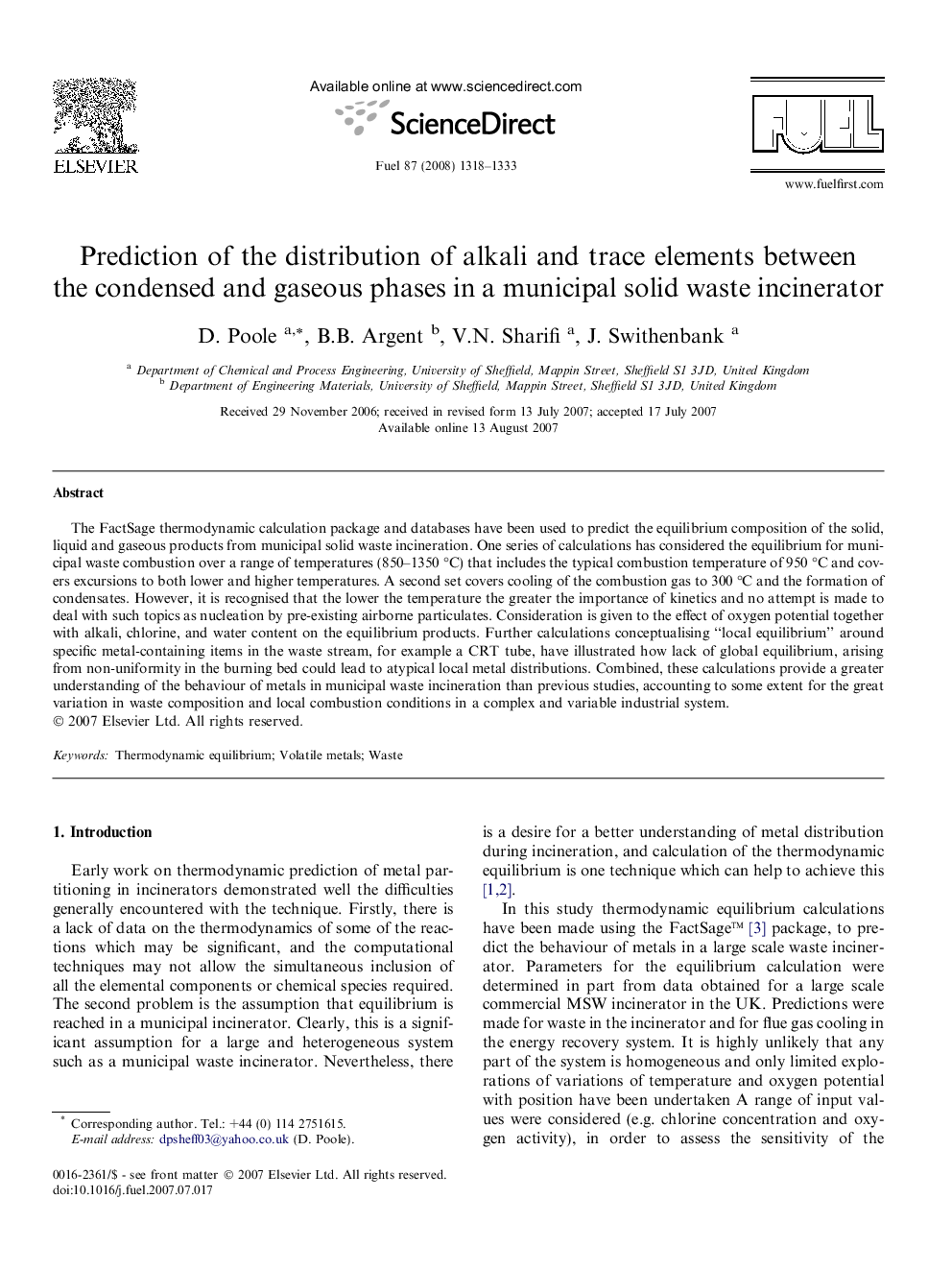| Article ID | Journal | Published Year | Pages | File Type |
|---|---|---|---|---|
| 208034 | Fuel | 2008 | 16 Pages |
The FactSage thermodynamic calculation package and databases have been used to predict the equilibrium composition of the solid, liquid and gaseous products from municipal solid waste incineration. One series of calculations has considered the equilibrium for municipal waste combustion over a range of temperatures (850–1350 °C) that includes the typical combustion temperature of 950 °C and covers excursions to both lower and higher temperatures. A second set covers cooling of the combustion gas to 300 °C and the formation of condensates. However, it is recognised that the lower the temperature the greater the importance of kinetics and no attempt is made to deal with such topics as nucleation by pre-existing airborne particulates. Consideration is given to the effect of oxygen potential together with alkali, chlorine, and water content on the equilibrium products. Further calculations conceptualising “local equilibrium” around specific metal-containing items in the waste stream, for example a CRT tube, have illustrated how lack of global equilibrium, arising from non-uniformity in the burning bed could lead to atypical local metal distributions. Combined, these calculations provide a greater understanding of the behaviour of metals in municipal waste incineration than previous studies, accounting to some extent for the great variation in waste composition and local combustion conditions in a complex and variable industrial system.
